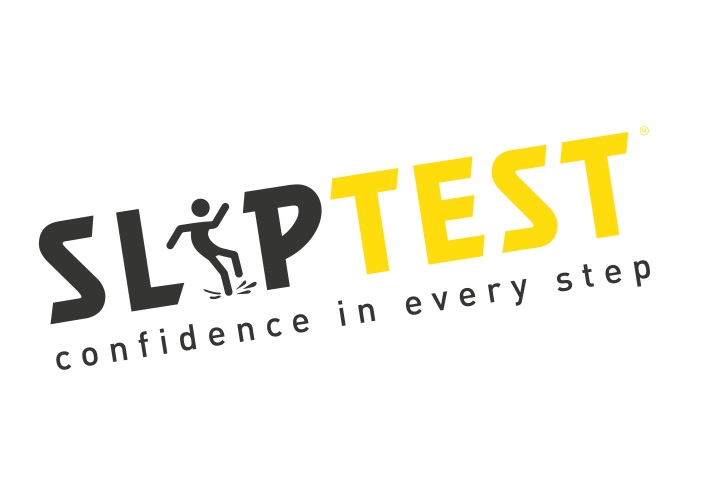R Ratings Vs Pendulum Test Values (PTV)
In the UK, the most widely used method for measuring slip resistance is the Pendulum Test, also known as the British Pendulum Test (BPT) or the BS 7976-2:2002 standard. The other method is the SlipAlert, which has been tested and recognised by the HSE as a ‘good indication of available friction, lending itself to risk assessment, monitoring of floor surfaces and evaluating & monitoring cleaning regimes.’ (HSL Evaluation of the Kirchberg Rolling Slider and SlipAlert Slip Resistance Meters) SlipAlert features in the UK foreword of the European Standard BS EN 16165 and British Standard BS8204:6.
The “R Rating” system commonly used in some other countries, such as Germany is not recognised or used in the UK. This is because the R rating does not give specific enough information to fully understand the risk of slip. The R rating is a ramp test standard, DIN 51330. It is not suitable for in-situ testing, as it isn’t portable and requires a section of the flooring to be applied to the ramp.
The Pendulum Test measures the dynamic coefficient of friction between a standardised rubber slider (mimicking a shoe sole) and the flooring surface. The results are typically expressed in terms of the Pendulum Test Value (PTV). The higher the PTV, the greater the slip resistance of the flooring.
The scale for Pendulum Test Values:
- 0-24 PTV – indicates a high risk of slip, a score of 19 PTV means that 1 in 3 people would find the floor surface slippery underfoot.
- 25-35 PTV – indicates a moderate risk of slip, a score of 25 PTV means that 1 in 20 people would find the floor surface slippery underfoot.
- 36+ is a low risk of slip, at 36 PTV, 1 in 1 million people would find the surface slippery under foot.
So how does this compare to the R Rating system?
- An R10 rated floor, has a PTV range anywhere between 18 and 34 PTV.
- Essentially between 1 in 3 people and up to almost 1 in 1 million people could find the surface slippery under foot.
That range is massive and so does not tell us very much about the slip risk and is therefore fairly useless information.
We are often asked for an R rating from customers who are new to slip resistance, this classification is mainly pushed by the various flooring manufacturers, our advice when specifying a new floor surface is always to request a PTV (Pendulum Test Value) and never to accept the R rating as a reliable indication of slip risk.
Normally, we can expect to see the following correlations between PTV and R-Ratings
R-Value | PTV |
R9 | 18-34 |
R10 | 18-34 |
R11 | 34-51 |
R12 | 51-70 |
R13 | 70+ |
You wouldn’t be alone in thinking that an R13 would therefore be the best option to ensure a low-risk floor surface. However, this really depends on the type of floor surface and its location and usage. For example, if you have a smooth surface, a higher PTV or R-rated surface is likely to be too grippy underfoot and in turn cause a trip hazard. Whereas if the floor surface is on a ramp or slope the grippiness is needed.
Typically, what is specified when it comes to R Rated floors is:
R9 to R10: These ratings are typically found in dry areas where slip resistance is not a major concern, such as bedrooms or living rooms. However, although they may prove a sensible option in the dry the UK slip Resistance Group recorded that 32% of the R10s they tested did not have a sufficient slip resistance in the wet.
R11: This rating is common for residential kitchens and bathrooms or commercial areas with occasional exposure to water.
R12: Flooring with an R12 rating is suitable for areas where there may be a higher risk of water exposure, such as commercial kitchens or areas near swimming pools.
R13: This is a high slip-resistant rating suitable for areas with constant water exposure, like industrial kitchens or public swimming pool decks.
Managing and understanding slip risk is very individual and a lot more sophisticated than just choosing a number or an R rating. It’s important to recognise the intricacies and environmental factors of each location and surface and take a holistic approach to specifying and managing flooring and this is exactly where the expertise and consultancy services of a slip testing company add value to your decisions.



